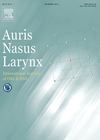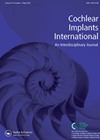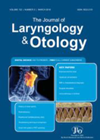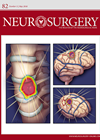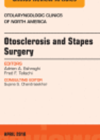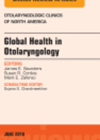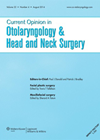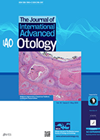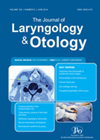
Journal Reviews
Tinnitus in children
This is a review article about the management of tinnitus in children. In the end the authors came up with just three papers that made the grade. Maybe the most interesting finding was from Vianni in the JLO in 1989....
DIY Epley manoeuvre
This is an interesting paper that looks at getting patients to do their own particle repositioning manoeuvre (PRM) after having it done by a clinician (‘Epley’ to you and me although there are some slight differences) once a week for...
eSRTs versus eCAP: Which is better?
Electrically evoked compound action potentials (eCAP) and electrically evoked stapedius reflex threshold (eSRT) techniques were compared to establish how well the two techniques correlated and which yielded quicker results in a group of paediatric cochlear implant (CI) users. This team...
Sound localisation after bilateral cochlear implantation
Limited information is known about the localisation skills of paediatric cochlear implant patients who were good hearing aid users before their hearing deteriorated. As localisation is a skill often associated with good natural hearing, there is a worry that implants...
A review of significant issues in the management of obstructive sleep apnoea in children
There are considerable variations in the management of obstructive sleep apnoea in children and this suggests a need for more research and evidence-based information. In this review article, the authors address four key issues. Literature compares tonsillectomy with tonsillotomy, the...
Cerebrospinal fluid leaks after vestibular schwannoma surgery
This study analyses 30-day readmission data after vestibular schwannoma surgery using a multicentre longitudinal State of California dataset. The authors studied risk factors, and timing of readmission in 6820 patients over 15 years. Of these, 490 readmissions were reported for...
Management of patients with advanced otosclerosis
This paper discusses the management options of advanced otosclerosis. There are several definitions for advanced otosclerosis in the literature but, more recently, the diagnosis of advanced otoscletosis has been reserved for patients who have less than 30% aided speech discrimination...
Treating middle ear conditions in developing countries
This month’s journal issue discussed global health in otolaryngology with this paper focusing on the management of chronic middle ear disease in the developing world. Chronic suppurative otitis media (CSOM) is more common in developing countries. The reason for this...
Current management of facial fractures in the preadolescent
This article reviews the trends in management of preadolescent facial fractures – a challenging population due to the need to consider growth, dynamic changes in dentition, and evolving fracture patterns. In summary, conservative management is preferred in all fractures in...
Full Vs tapered dose of oral prednisolone for sudden sensorineural hearing loss
I was drawn in by the title of this article, in the expectation that it might be a randomised controlled trial, but it was not. Sudden sensorineural hearing loss is an uncommon condition, which has a potentially disastrous outcome, so...
Chronic facial pain: types and long-term treatment
This publication discusses the details and differences between chronic tension type headache and migraine and followed a cohort of 240 patients over 36 months. The authors applied strict criteria to distinguish between chronic tension headache and migraine, these essentially being...
Association of sinonasal symptoms with ear disease
The study explores the possible association of sinonasal symptoms with ear disease. The subjects were patients with ear problems which were categorised as group A – patients with external ear problems (15%), group B1 – patients with middle ear mucosal...

